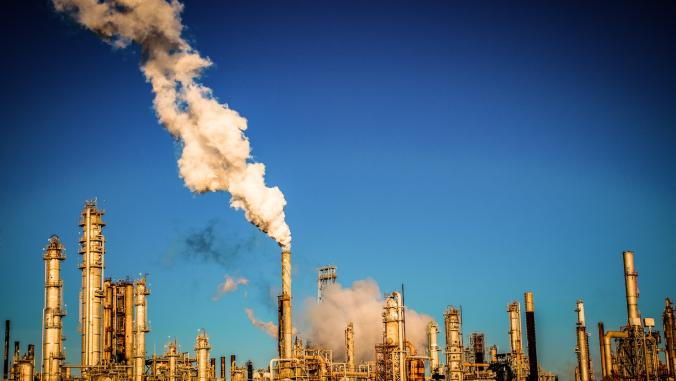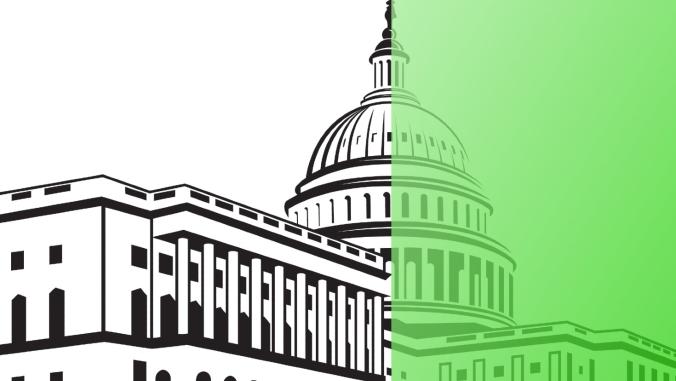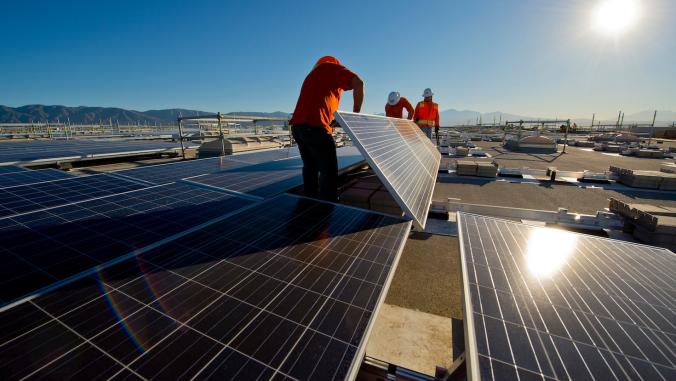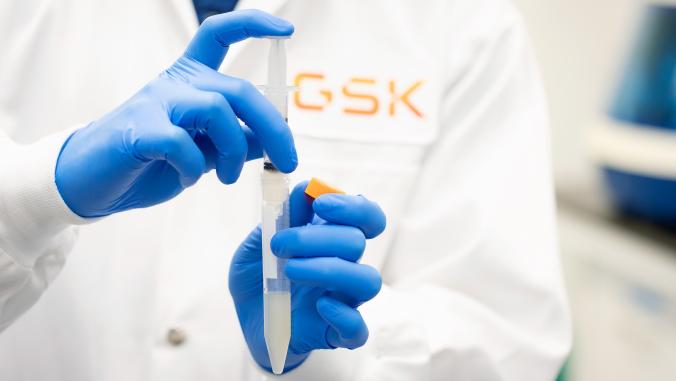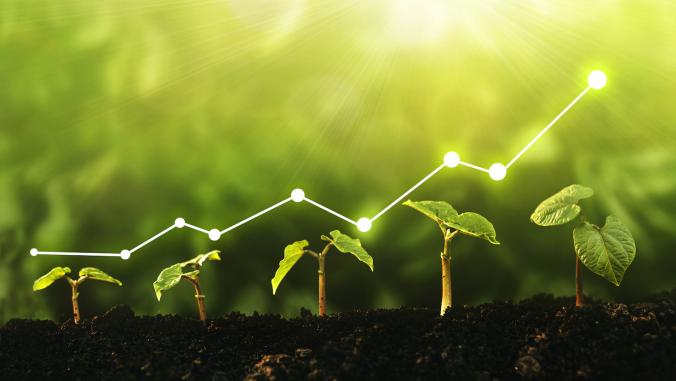If global plastics production continues under business as usual, the world will mismanage 7.7 gigatons of plastics over the next 20 years, according to new research from Google. To put that number into perspective, 7.7 gigatons is equal to 16 times the weight of the entire human population on earth today, Mike Werner, Google’s lead for circular economy, told participants in a breakout session at GreenBiz Group’s Circularity 2021.
Despite that sobering statistic, momentum is building towards 2025 sustainable packaging goals. Companies are unifying behind the New Plastics Global Economy Commitment, industry partnerships are tackling difficult challenges and business support for policies such as extended producer responsibility — previously unthinkable — is gaining steam.
"We’ve really seen 2025 become this big date in our industry," noted Taylor Price, manager for global sustainability at AptarGroup, a product delivery and consumer packaging company. "It’s the year to get a lot of things done."
There is still, of course, a very long way to go to eliminate plastic waste, and an urgent need for both investment in recycling infrastructure — and for more attention to reuse.
Here are some key takeaways from three breakout sessions about sustainable packaging goals at Circularity 2021.
1. Packaging goals need to move into action
While the commitment and intensity around sustainable packaging goals is greater than ever, companies need to internalize their goals and maximize the actions that are within their control, said Emily Tipaldo, executive director of the newly formed U.S. Plastics Pact.
Nina Goodrich, director of the Sustainable Packaging Coalition (SPC) and executive director of GreenBlue, echoed Tipaldo’s sentiment. Summarizing the big picture of where companies are in their goal setting, Goodrich noted, "There’s a real difference between an actual goal, and a statement of support. Some folks have target dates, baseline data, and measurements and metrics, and other folks talk about striving to … or giving preference to."
Goodrich said that about half of the sustainability and packaging commitments in SPC’s database of 152 brands and retailers, and 226 converters and manufacturers are actual goals versus statements. Most come from brands and retailers.
For us, the lifecycle assessment has been really helpful in understanding eco-design principles but also, what does that mean to our customers, our suppliers, when we're making changes.
2. New tools are helping companies turn goals into action
Last month, the Recycling Partnership launched a free, online tool called PlasticIQ to help companies of all sizes, no matter where they are on their journey, act on their sustainable packaging goals. Created with a grant from Walmart and the help of SystemIQ, the tool enables companies to input their plastics footprint and go through a series of steps to prioritize actions, Sarah Dearman, vice president of circular ventures at the Recycling Partnership, told attendees.
"What I especially love about it," she said, is that it enables companies to visualize the impacts of different solutions, such as focusing on reuse, improving recyclability or increasing recycled content. "As you choose the different options within the tool…you can visually see what the impact is going to be on your plastic footprint as you move into the future, and that helps you develop your strategy."
Other valuable resources include the Ellen MacArthur Foundation’s Report: Upstream Innovation: a guide to packaging solutions, and the foundation’s 2020 Report Card, where companies can learn about the commitments and progress of their peers.
3. Start with a vision, be data-driven, seek external guidance
Sustainability leads from Keurig Dr. Pepper; BlueTriton Brands (formerly Nestlé Waters North America); AptarGroup; Gillette; and Tetra Pak, a food packaging and processing company, all offered valuable insight about goal setting within their organizations. Advice included:
Start with a roadmap
"It’s helpful to start with: What's your vision of the future, where do you want to be as a company in 2030, 2040… and then work backwards based on what are the issues and opportunities important to you," said David Tulauskas, vice president and chief sustainability officer at BlueTriton Brands.
Keurig Dr. Pepper took a similar tack, said Charlie Schwarze, the company’s director of sustainable packaging. "We were very data-driven, we looked at our entire portfolio, which is ever-changing, looked at where we saw the possibilities for each of those goals, and then designed that roadmap prior to announcing the goals."
Be data-driven
Among the comments about the importance of being data driven, Price of AptarGroup noted, "For us, the lifecycle assessment has been really helpful in understanding eco-design principles but also, what does that mean to our customers, our suppliers, when we're making changes. Having that deep understanding and the data to back that up has been really important."
Jeff Greene, R&D technical director for sustainable packaging at Gillette, said that surveying consumer preferences for sustainable packaging and presenting that data internally helped get internal buy-in for the company’s goal setting.
Don’t bite off more than you can chew
Set achievable and realistic goals, because otherwise you will only be frustrated, noted Luana Pinheiro, Tetra Pak sustainability transformation manager for the Americas.
Breaking down recyclability goals into bite-sized chunks and assigning them to individual teams also helps, noted Schwarze: "Whether it's a brand that's working toward a target or a format type that we're working to replace or redesign, [it helps] to break that into a specific task for an assignable person."
Use external groups to guide your goal setting
Tetra Pak seeks help from external groups to set goals that will drive meaningful changes, such as the Science-Based Targets initiative, Pinheiro said. "These kinds of external organizations can help us with the challenges on how to set the goals, and they help us to keep committed to the goals that we set."
4. Collaborations are moving the needle
Joining recycling partnerships helps companies advance goals they can’t achieve on their own.
"2025 is fast approaching and from an R&D perspective, it's basically tomorrow," Schwarze noted. "Keeping everybody calm and on track, as we look at these things…that's where we're partnering externally." He added that the Polypropylene Recycling Coalition is helping the company address difficult challenges such as flexible packaging.
AptarGroup is leading a project with the Ellen MacArthur Foundation on packaging recyclability and circular innovation, bringing together consumer brands and cities across the globe to understand the landscape and expand access to recycling, Price said. "It’s something that AptarGroup wouldn't be able to do on our own."
Whether it's a brand that's working toward a target or a format type that we're working to replace or redesign, [it helps] to break that into a specific task for an assignable person.
Collaboration with peers helps too, commented Pinheiro and Tulauskas. "Knowing our peers’ goals can lead us to partner with companies that we may not initially think to join forces with, like our competitors," said Pinheiro, citing the Carton Council that Tetra Pak helped form a decade ago to increase carton recycling. "We have seen really great results since then."
5. Policymakers need to ride the EPR momentum
In mid-June, 100 businesses in the packaging value chain joined with 50 organizations on a statement calling for extended producer responsibility (EPR) or for the companies that put packaging on the market to pay for its collection, sorting and recycling.
Such support for EPR is a dramatic change from a year ago, and even since the beginning of 2021. Policymakers need to ride this momentum.
"If we don't do it, it means that we're just accepting that recycling rates will not meaningfully scale. That’s just the inconvenient truth," said Sander Defruyt, lead for new plastics economy at the Ellen MacArthur Foundation, in a follow-up interview.
While EPR currently has the most traction in the U.S., Tulauskas noted that some companies are policy-agnostic. "We need harmonization and modernization of policy that helps to improve recycling rates, whether that's an EPR or a bottle bill."
6. Companies need to step up with reuse
There was little talk of reuse across the three breakout sessions, underscoring what Defruyt calls the "biggest gap" in moving toward a circular economy for plastics. Recycling alone can’t solve the plastic waste problem, he said.
Companies need to increase their efforts on moving away from single-use throwaway models to new delivery models such as reuse. "We see more and more pilots here and there, but it's still smaller, pilot-scale efforts," Defruyt said.
7. Infrastructure investment is urgently needed
Google’s new study evaluated demand for six polymers in three major regions of the world representing 86 percent of current global plastics demand, Werner said.
Modeling the impact of 14 interventions, the report identifies the need to expand mechanical recycling infrastructure five to six times by 2040, and chemical recycling capacity by more than 100 times. It puts the price tag on all interventions needed, including infrastructure, at $500 billion globally.
"We need to have a global conversation about how to unlock the capital required to invest in these strategic interventions," said Werner. "We can't produce a circular economy for plastics, if we don't have the infrastructure to process plastic feedstocks into recycled plastics."


